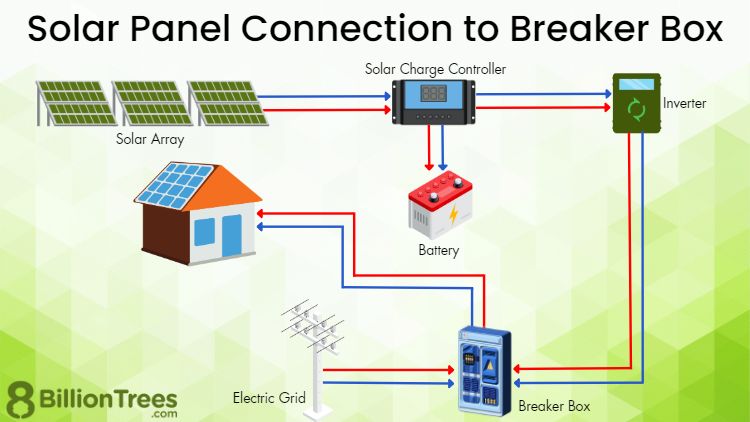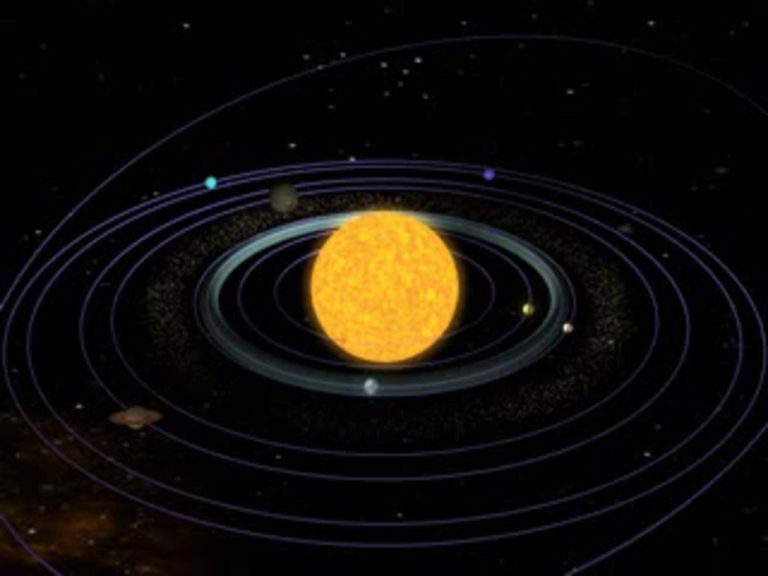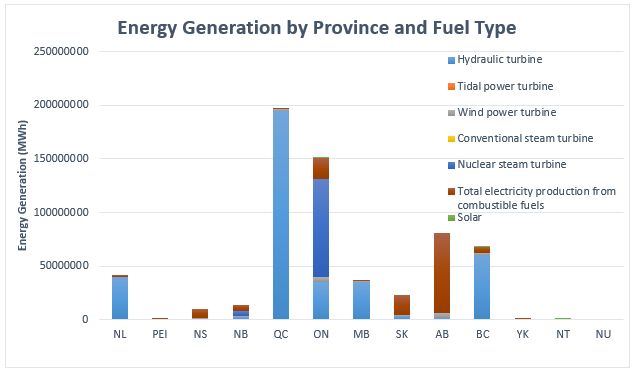How Do Solar Panels Connect To Electricity?
Solar panels are an increasingly popular way for homes and businesses to generate their own electricity from sunlight. Solar panels, also known as photovoltaic (PV) panels, are made up of many individual solar cells that convert sunlight into direct current (DC) electricity. The DC current is then converted into alternating current (AC) using an inverter so it can be used to power lights, appliances, and electronics.
Solar panels can be installed on rooftops, on the ground, or integrated into building materials. As sunlight hits the solar cells, electromagnetic particles called photons get absorbed into the semiconductor material in the cells. This frees up electrons and creates an electric field that causes electricity to flow. The PV panels are wired together to boost the voltage, and the current then flows to the inverter and electrical panel.
This article will provide an overview of how solar panel systems connect to a home’s or building’s existing electrical system to provide clean, renewable electricity from the sun.
How Solar Panels Produce Electricity
Solar panels produce electricity through the photovoltaic effect. When sunlight hits the solar cells inside a solar panel, it knocks electrons loose from the atoms in the semiconducting material used to make the cells. When electrons are knocked loose, they are able to move freely. The solar cells contain electric fields that act to force the freed electrons in one direction, creating an electrical current.
The photovoltaic effect was first discovered in 1839 by French physicist Edmund Becquerel. He found that certain materials would produce small amounts of electric current when exposed to light. However, it was not until 1954 that researchers at Bell Labs in the United States created the first modern silicon solar cell, which had a 4% efficiency rate. Today’s solar panels have efficiency rates between 15-22% for residential systems.
When sunlight hits a solar panel, photons with enough energy to kick electrons free are absorbed by the solar cells. The electrons move into an electric field within the cell, which causes them to flow in one direction, producing direct current (DC) electricity. This DC electricity is collected and combined into one output, and runs through wiring from the solar panels to other solar system components.
DC vs AC Current
Solar panels produce direct current or DC electricity. This means the electric current flows in one direction from the solar cells through the wires. AC or alternating current flows back and forth periodically. The electricity generated from power plants and that comes from electric sockets in your home is AC power. Most appliances, electronics, and lighting use AC current.
So why do solar panels produce DC current? The photovoltaic effect causes the solar cells to act like small batteries, setting electrons in motion in one direction. The cells don’t alternate the direction of the current internally. Some small appliances like phone chargers can use DC current directly from solar panels. But most equipment requires AC current. This means the DC current from solar panels needs to be converted to usable AC current.
Inverters
Solar panels produce direct current (DC) electricity, but our homes and the electrical grid operate on alternating current (AC) electricity.
So in order to connect solar panels to your home you need an inverter to convert the DC electricity into AC.
Inverters are electronic devices that convert the DC output of solar photovoltaic modules into AC electricity. The inverter is one of the most important components of a solar panel system. Without an inverter, the DC electricity produced by solar panels cannot power AC appliances.
The inverter plays a crucial role in maximizing the efficiency of electricity generation from the solar panels. It has advanced circuitry to maintain a stable AC output within a certain voltage range. This ensures the solar electricity is compatible with common household AC appliances and lighting.
Inverters also synchronize the frequency and phase of the solar electricity with the main utility grid. This allows any excess solar power to be fed back into the grid through net metering.
Most solar panel systems for homes have one central inverter, but largescale solar farms may use string inverters on groups of panels or microinverters on each panel. The central inverter is usually the most cost-effective option for residential solar arrays.
Overall, inverters are a vital component that enables solar panels to effectively harness sunlight and convert it into usable AC electricity for our daily use.
Connecting to the Electrical Panel
For solar panels to actually connect to a home’s electrical system, they need to safely integrate with the home’s electrical panel and wiring. This is done by installing a dedicated circuit breaker in the existing main electrical panel that connects solely to the solar array.
An experienced, licensed electrician will install this dedicated circuit breaker and run appropriate wiring from it to the solar panels. The circuit breaker serves as the integration point between the solar array and the home’s main electrical system. When the solar panels are producing energy, electricity flows through this circuit breaker into the home’s wiring.
The size of the circuit breaker depends on the solar array’s power output. For a typical residential solar array, a dual-pole 30-60 amp 240V circuit breaker is usually sufficient. The electrician will select the properly sized breaker based on the solar system specifications. The dedicated breaker only connects the solar array to the electrical panel, keeping it safely isolated from other household circuits.

Net Metering
Net metering allows solar panel owners to sell excess electricity they generate back to the utility provider. Here’s how it works:
When your solar panels produce more electricity than your home is using, the excess electricity is fed back into the grid. Your electric meter runs backwards during these times, “banking” credits for you.
At night or during cloudy weather when your solar system isn’t generating power, you pull electricity from the grid. As you use up your banked credits, your meter runs forward again.
At the end of each billing cycle, you are only charged for your net electricity use. If you generated more than you used, you may receive a credit on your bill!
Net metering policies vary by state and utility provider. Make sure to check the rules in your area to take full advantage of selling excess solar power.
Batteries
Solar panels produce electricity even on cloudy days or when your household needs less power than the panels generate. Normally, any excess electricity generated by the solar panels is fed back into the electric grid. However, in some cases, homeowners want to store that excess electricity instead of sending it back to the grid. To store excess electricity, solar systems use batteries.
Solar batteries can store energy during the day for use at night. They provide backup power when the grid goes down or in cases of a power outage. The batteries ensure some electricity will still be available from the solar PV system. They can also reduce dependency on the electric grid. With sufficient battery storage and solar generation capacity, some homes gain energy independence and can fully disconnect from the grid.
The most common types of batteries used with solar panels are deep cycle lead acid batteries and lithium-ion batteries. Both types have pros and cons, and the best choice depends on one’s solar setup and budget. It’s important to pick the right size battery bank to match your solar system. Work with a qualified solar installer to assess your energy needs and determine the ideal battery solution.
Maintenance
Solar panels require some regular maintenance to keep them operating at peak efficiency. The most important maintenance task is cleaning the panels to remove any dirt, dust, pollen, bird droppings, etc. that can build up over time. It’s recommended to clean solar panels at least a couple times per year, especially during the drier seasons when more dust accumulates. You can clean the panels yourself using a soft brush and mild soap and water, but don’t use any harsh chemicals or abrasives.
Monitoring your solar panel production is also an important aspect of maintenance. Keep an eye on your system’s daily/monthly output to make sure it’s generating as much electricity as expected. Many solar inverters and monitoring platforms allow you to track production right from your phone or computer. If you notice a dip in production, it could indicate an issue like dirty panels, shade from nearby trees, or a problem with the inverter that needs troubleshooting. Being proactive about monitoring helps keep your solar system running at maximum efficiency.
Costs
The costs of going solar have decreased dramatically in recent years, but installing a solar panel system still represents a significant investment for most homeowners. The main costs include:
- Purchase price of the solar panels
- Inverter, racking and other hardware
- Permits and inspections
- Labor for installation
For an average-sized residential system of 5-6 kW, total costs generally range from $15,000-$25,000 before incentives. Many homeowners take advantage of solar incentives and tax credits to reduce the net cost. The federal investment tax credit (ITC) offers a 26% tax credit for systems installed through 2022, which will drop to 22% in 2023. Many states and utilities also offer additional rebates and incentives that can reduce costs by thousands.
While solar does require an upfront investment, over the system’s lifespan of 25-30+ years the savings from lower electricity bills usually far outweigh the initial costs. Most solar panel systems have a payback period of 6-8 years when accounting for these savings. Going solar also increases the value of your home for resale.
To get the most accurate understanding of costs and return on your investment, it’s advisable to get quotes from multiple solar installers in your area. Reputable installers will provide a detailed analysis outlining system costs, expected performance, incentives, projected savings, and payback timeline specific to your home.
Conclusion
In summary, solar panels provide a renewable and sustainable way to generate electricity for your home. By installing solar panels and connecting them to your home’s electrical system, you can reduce or even eliminate your dependence on the traditional electric grid.
The benefits of switching to solar electricity include:
- Lower electricity bills – Once your solar panel system is paid off, your monthly electricity costs will be greatly reduced.
- Increased home value – Having rooftop solar increases the value and appeal of your home.
- Reduced carbon footprint – Using clean solar energy reduces your carbon emissions and environmental impact.
- Energy independence – You become less reliant on the electric utility company and traditional electric grid.
- Tax credits and incentives – Many rebates, tax credits, and incentives are available to help offset the initial cost of installing solar panels.
- Future-proofing – Lock in lower energy rates now and shield against potential future increases in electricity prices.
With proper maintenance, solar panels can provide decades of free electricity. Going solar is a smart long-term investment in your home and the planet.



